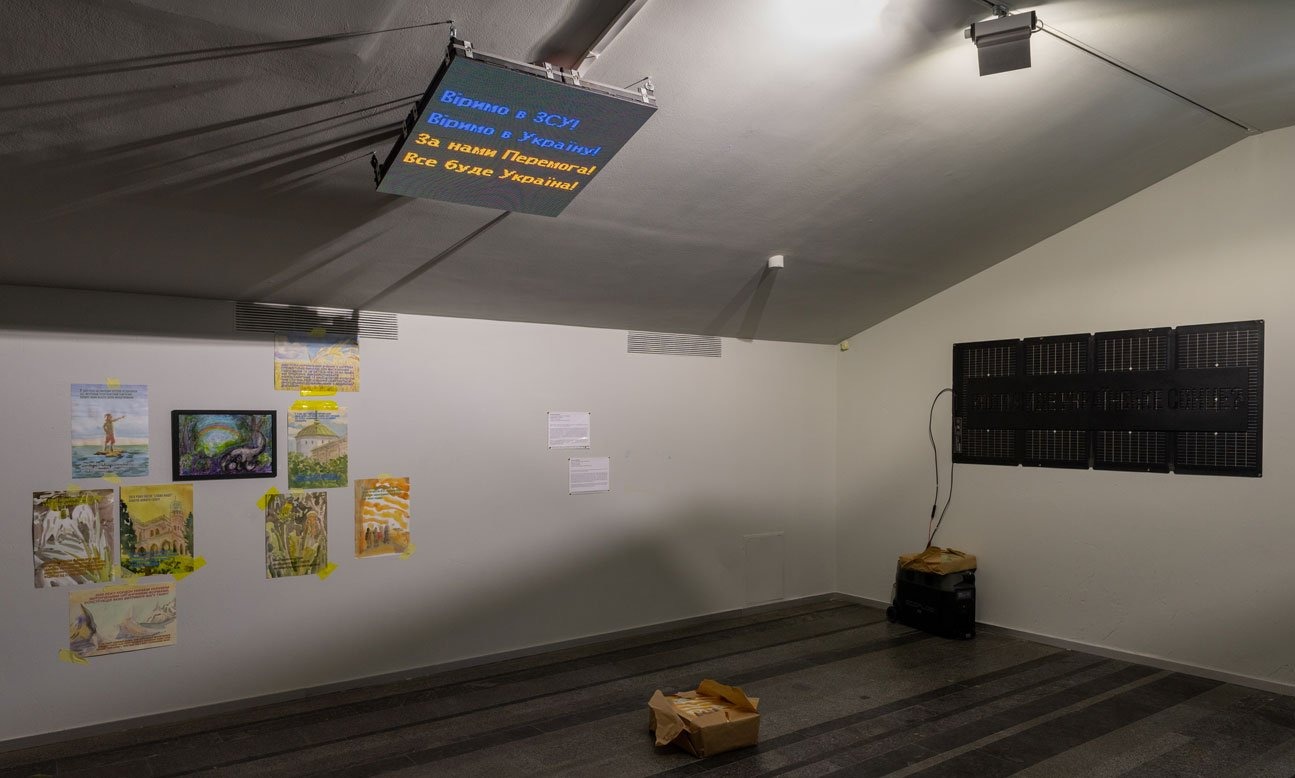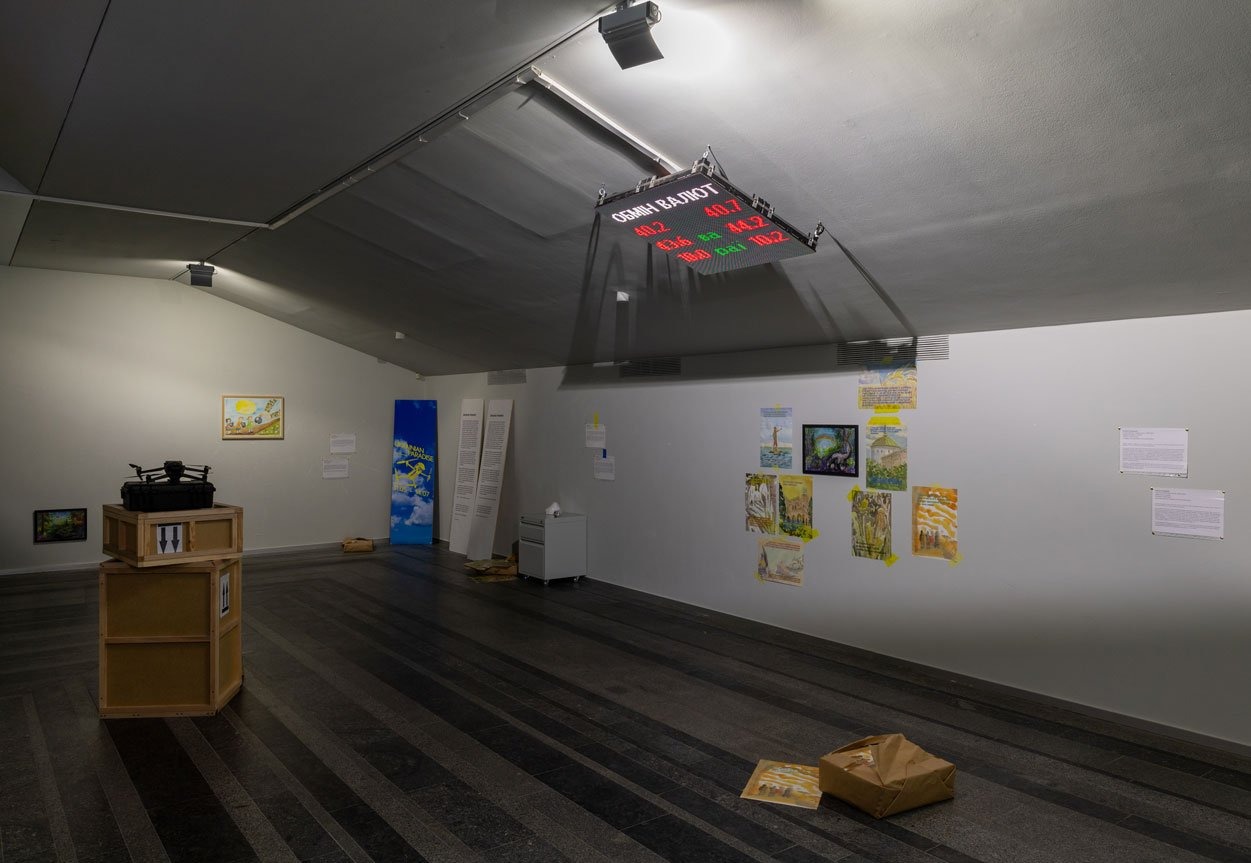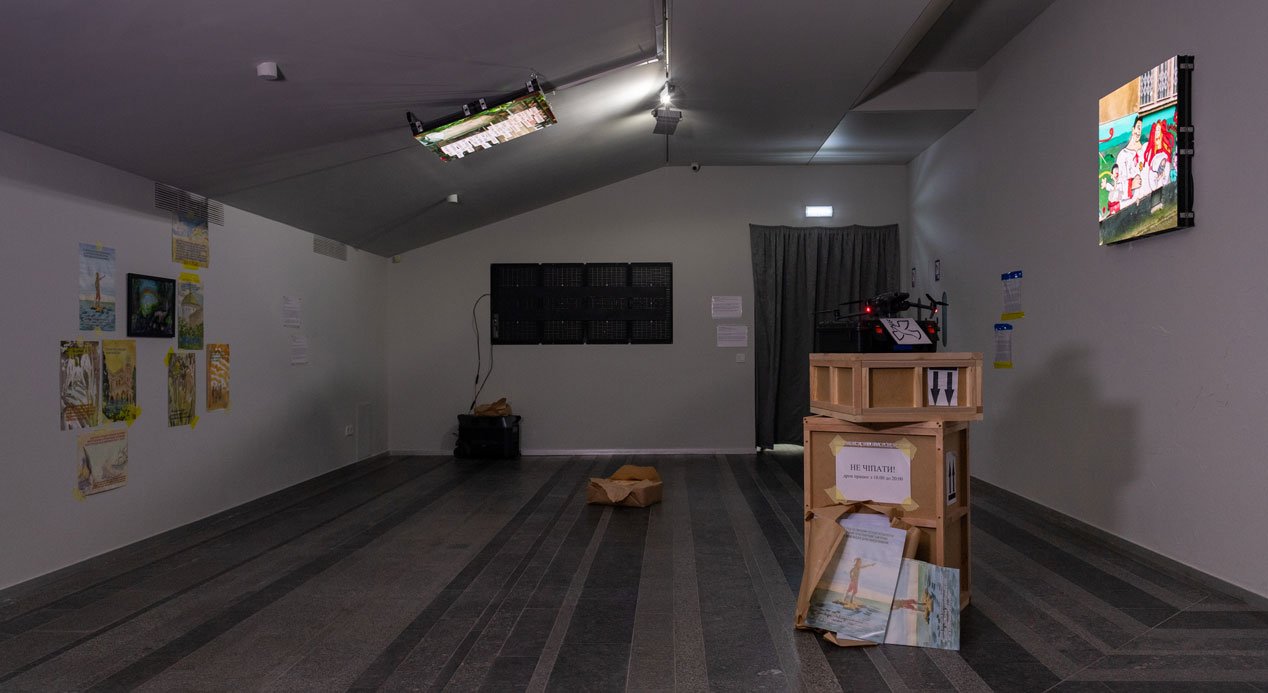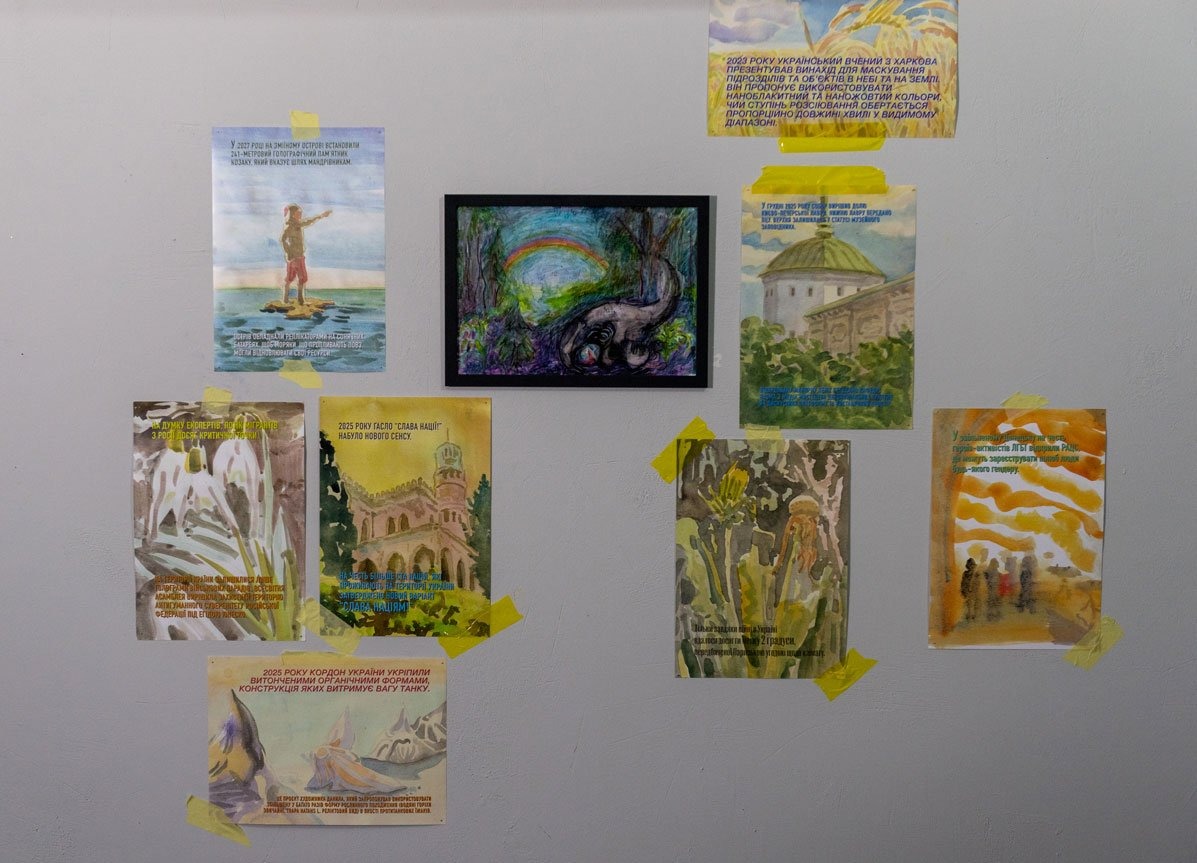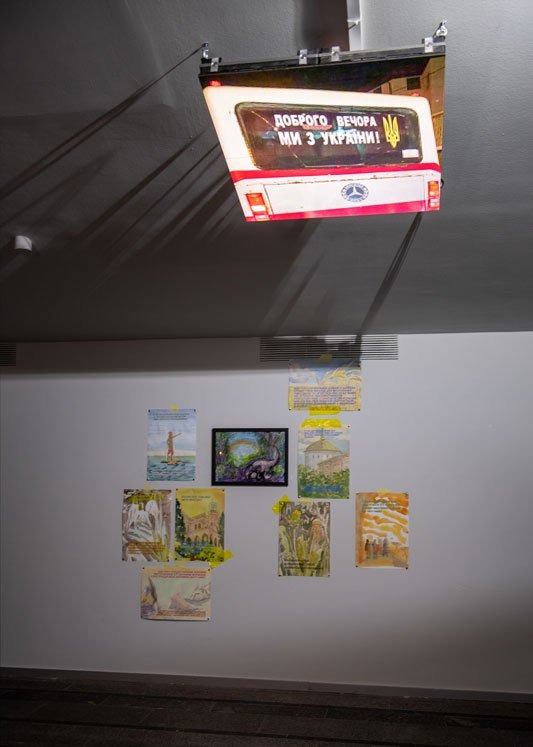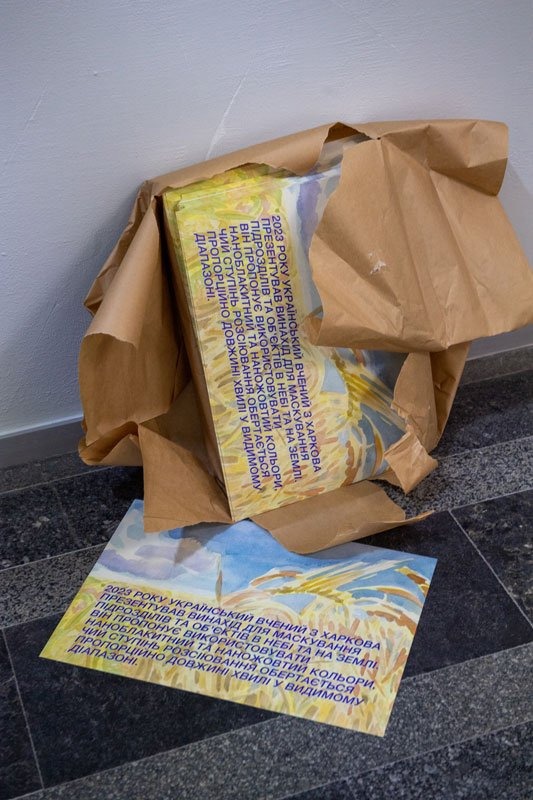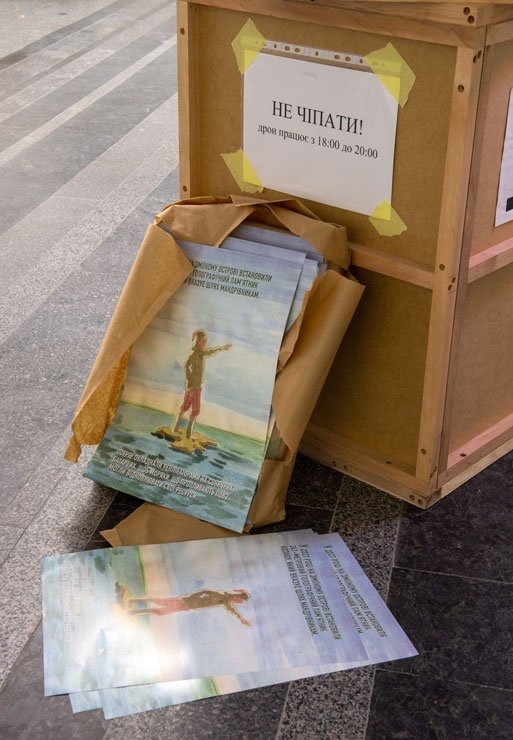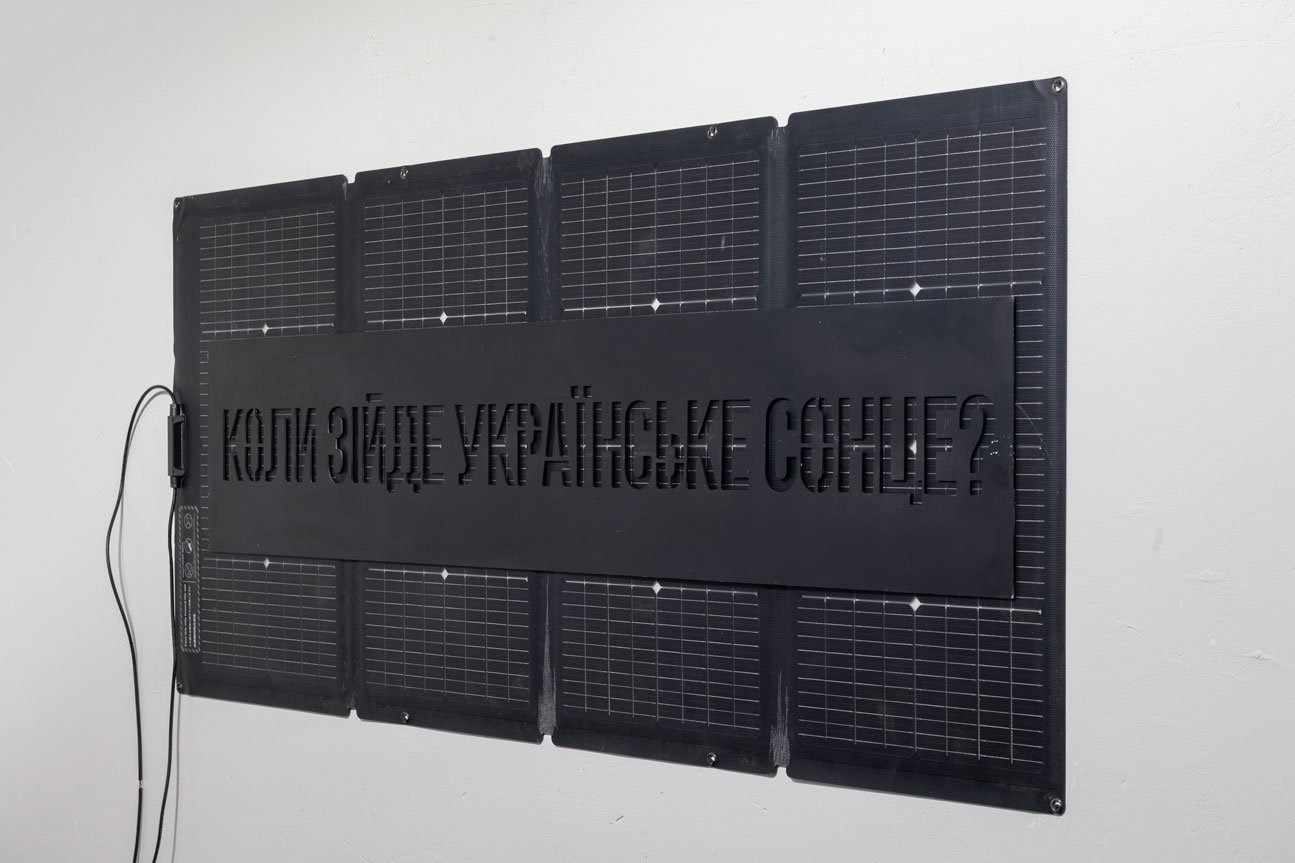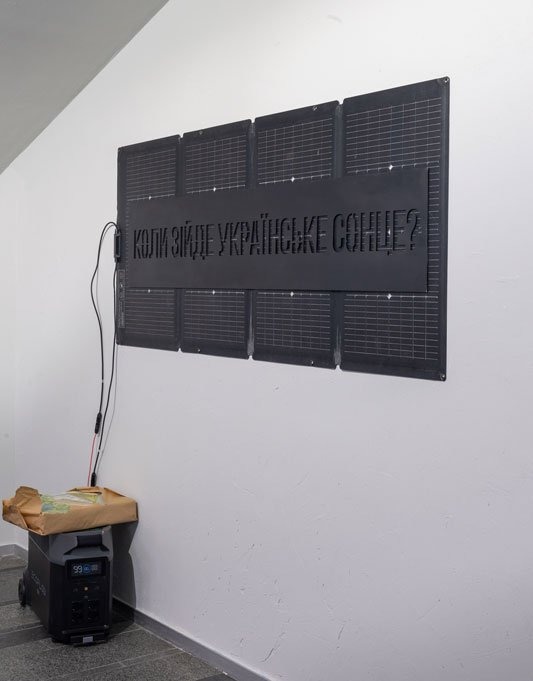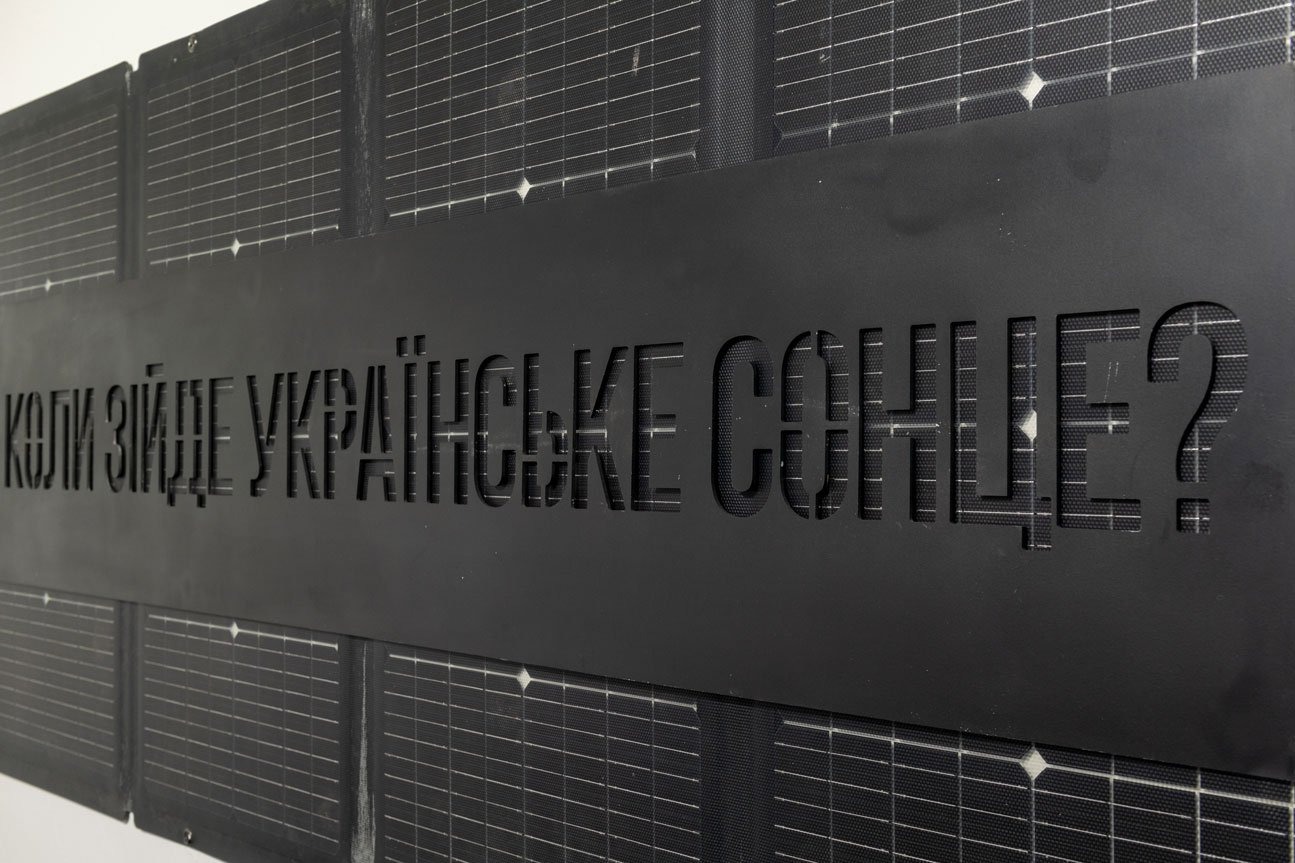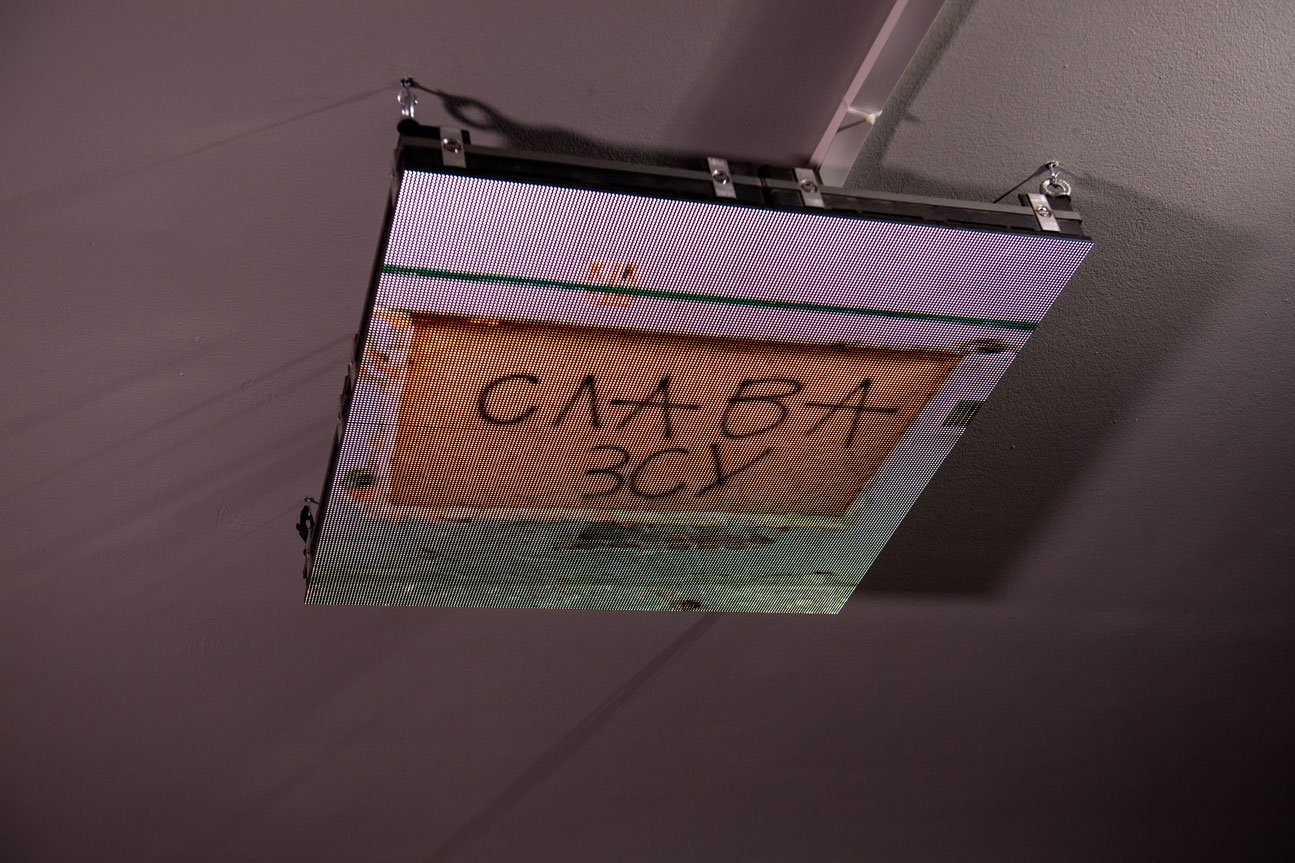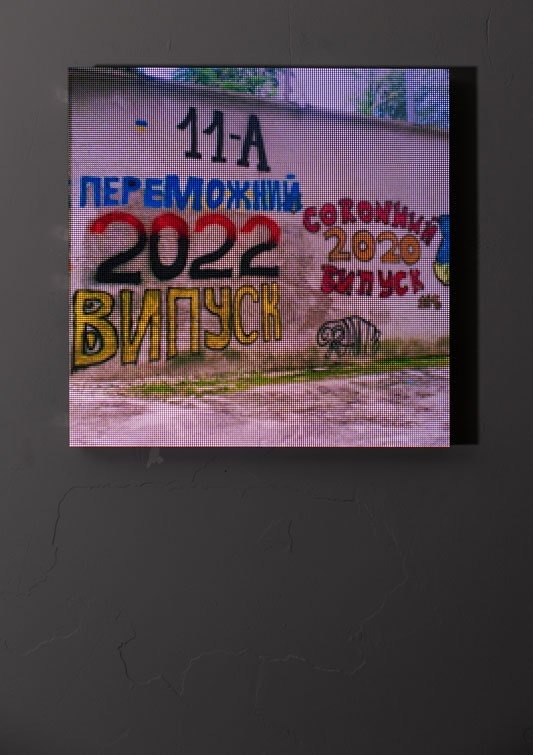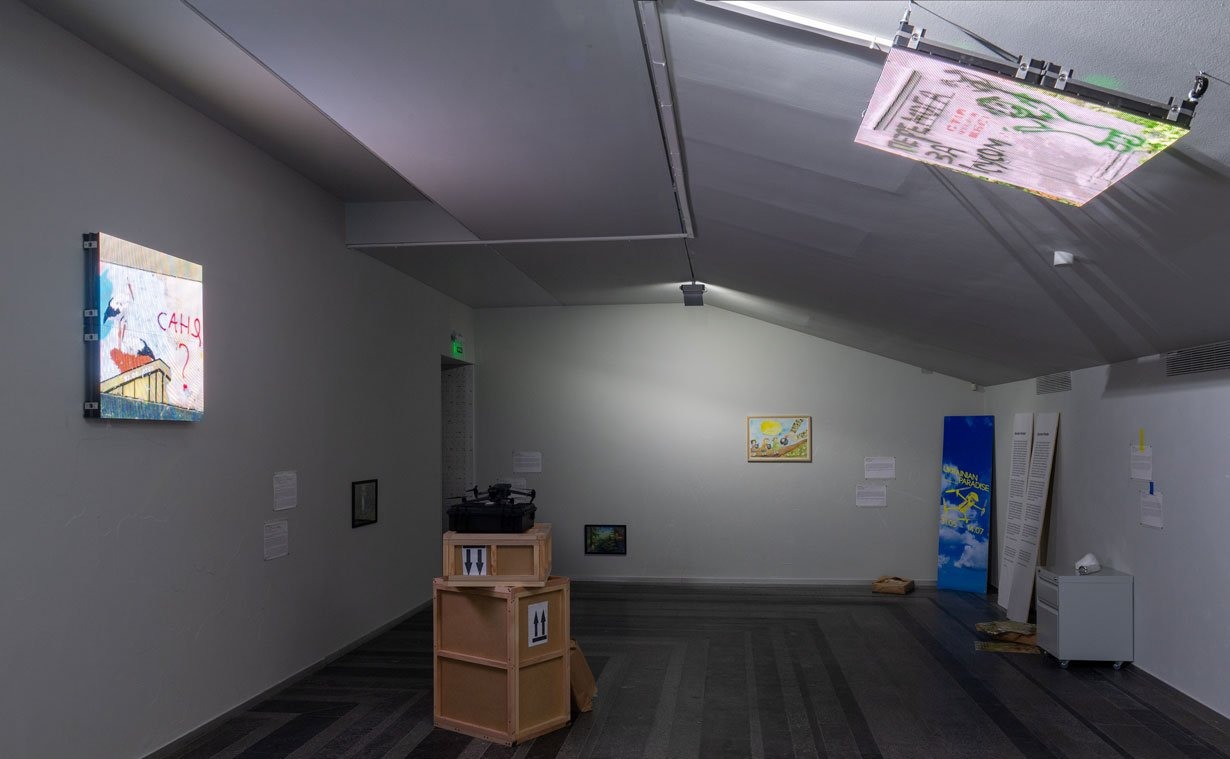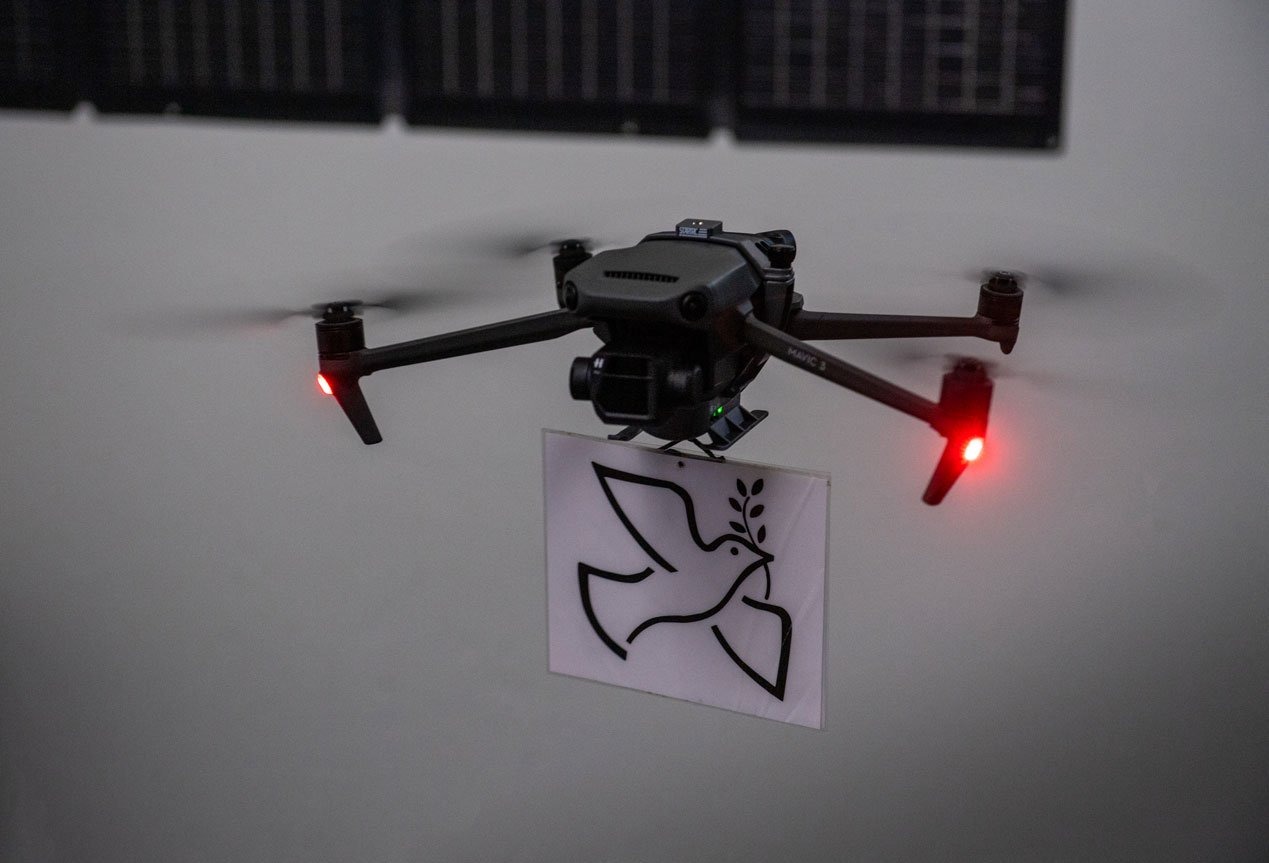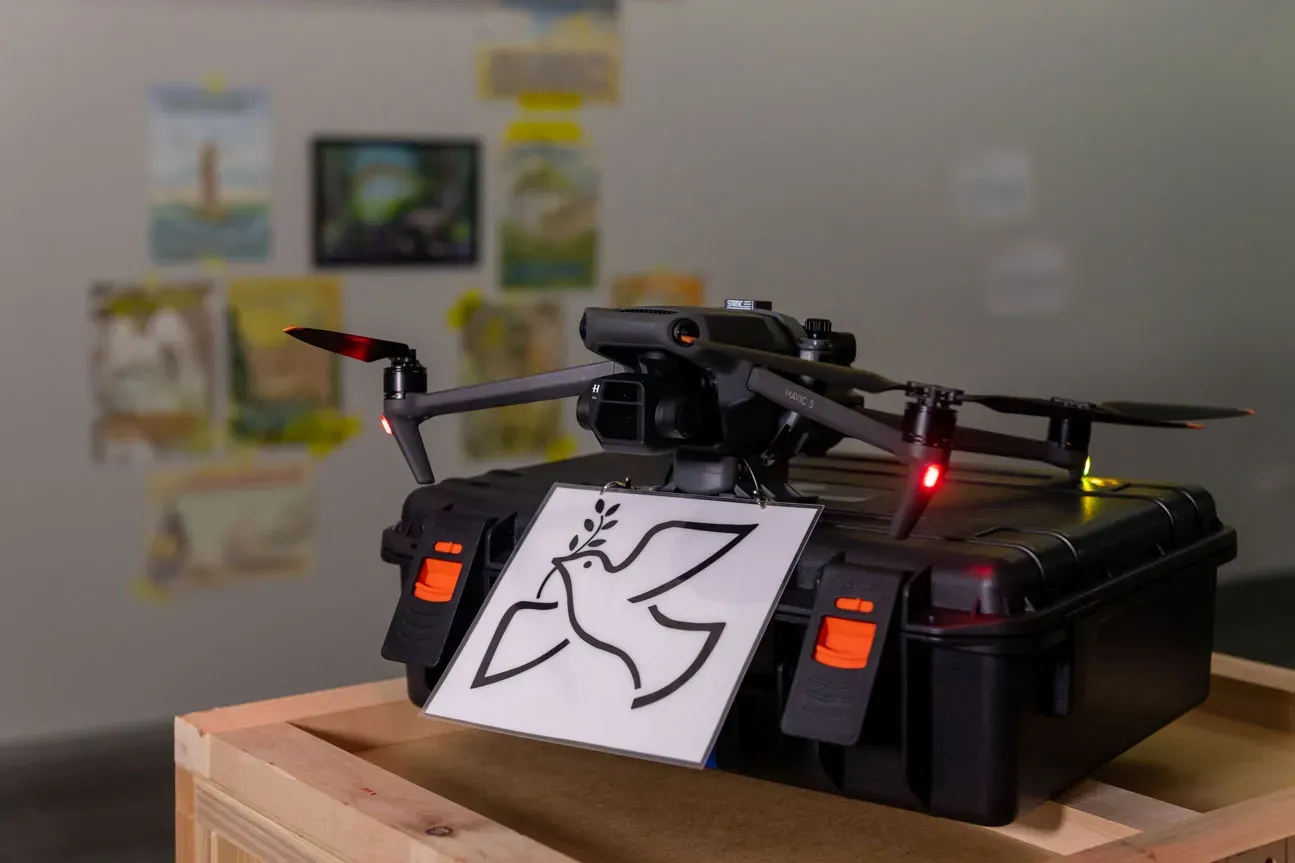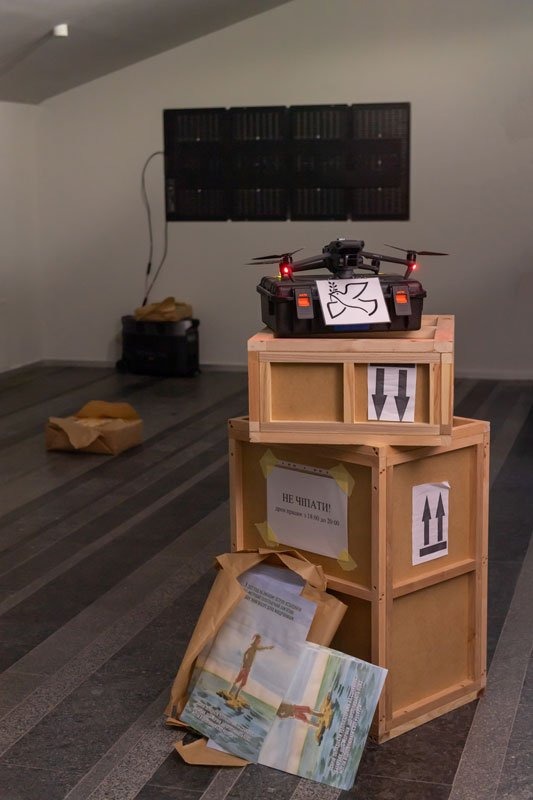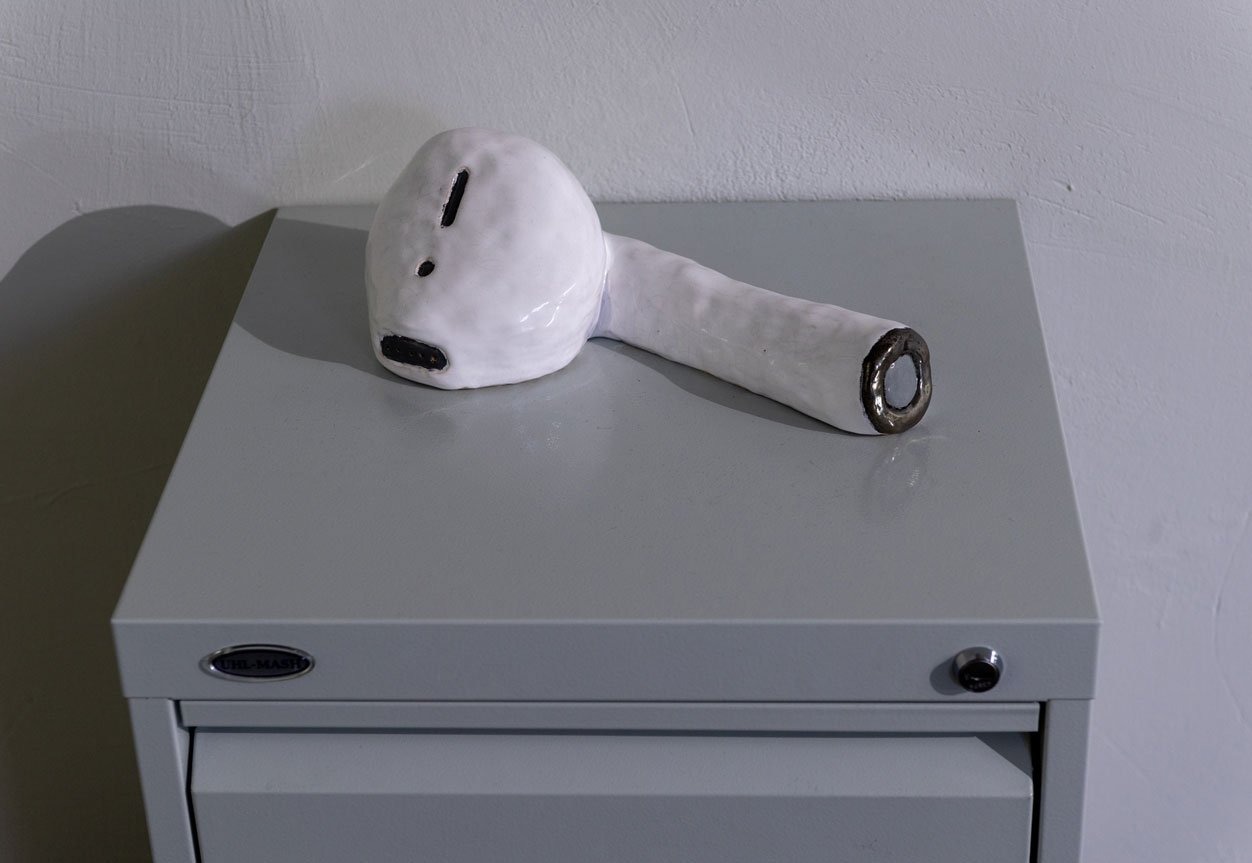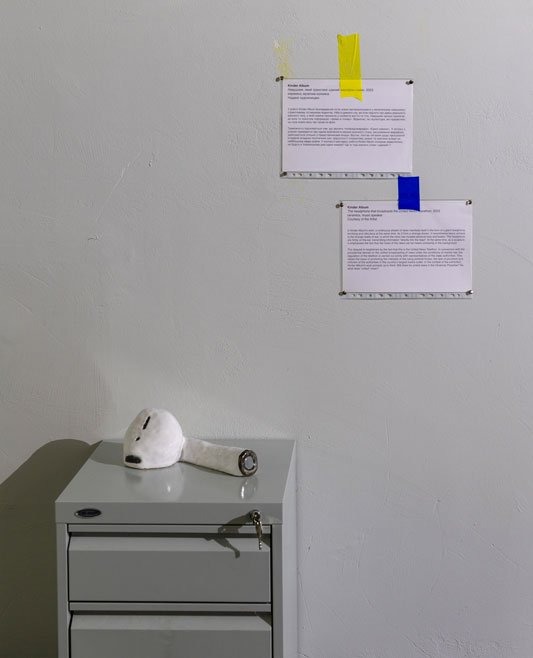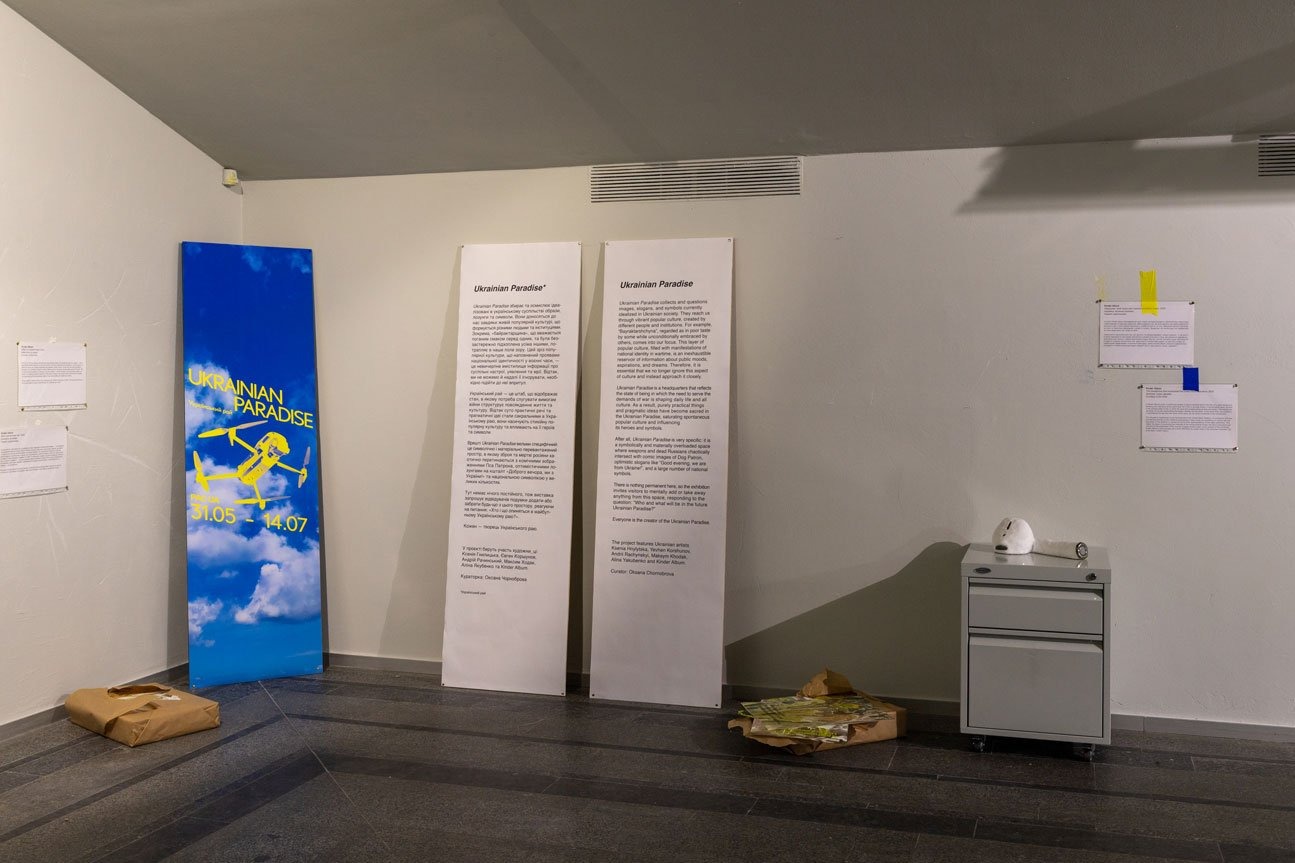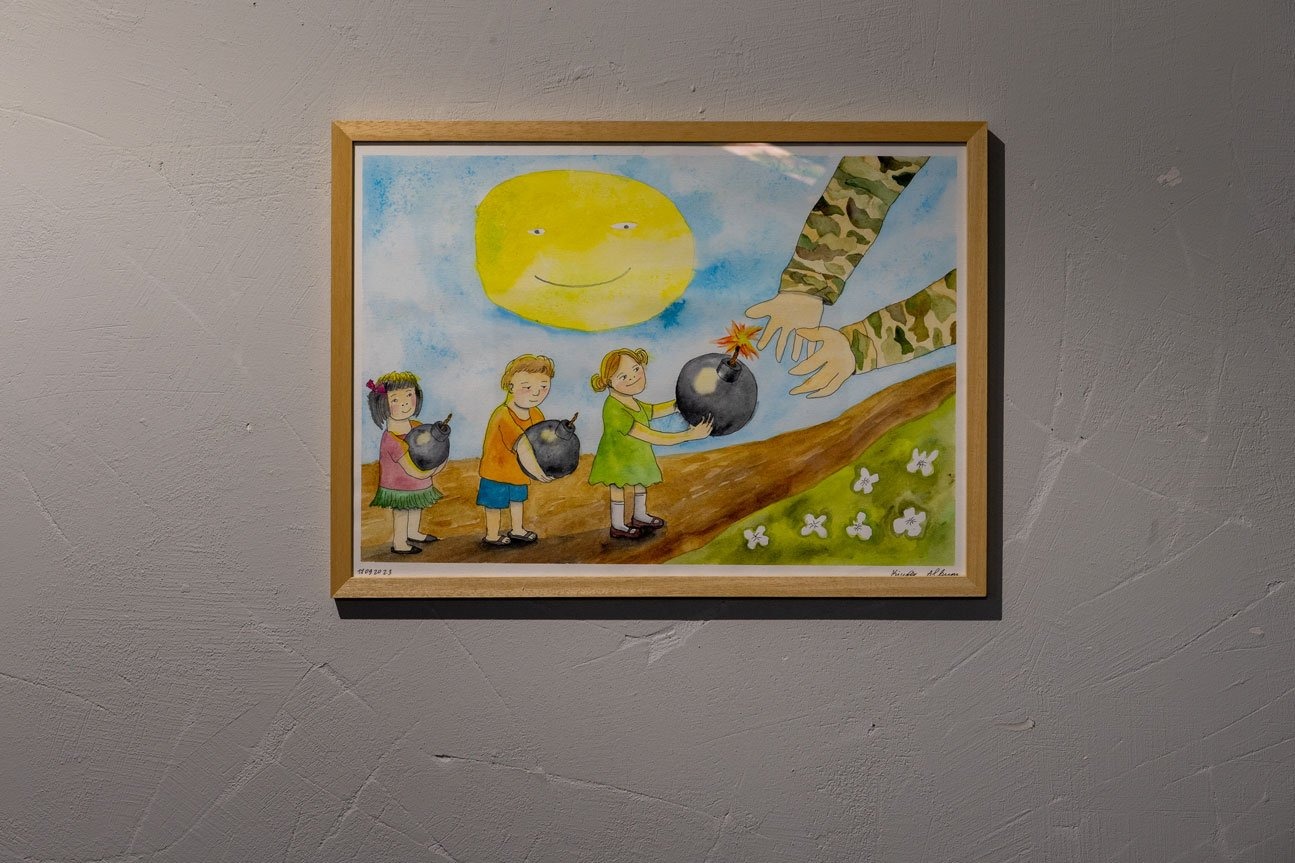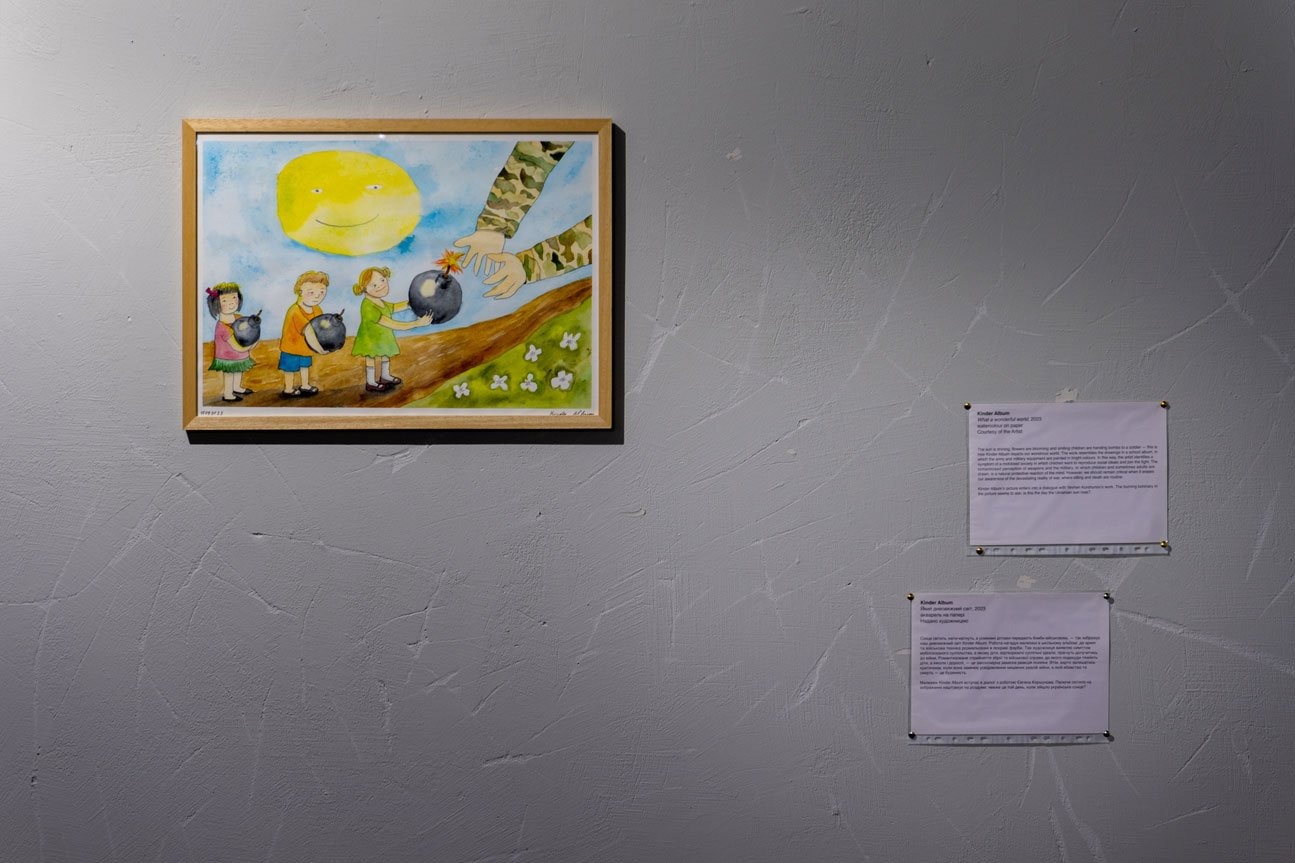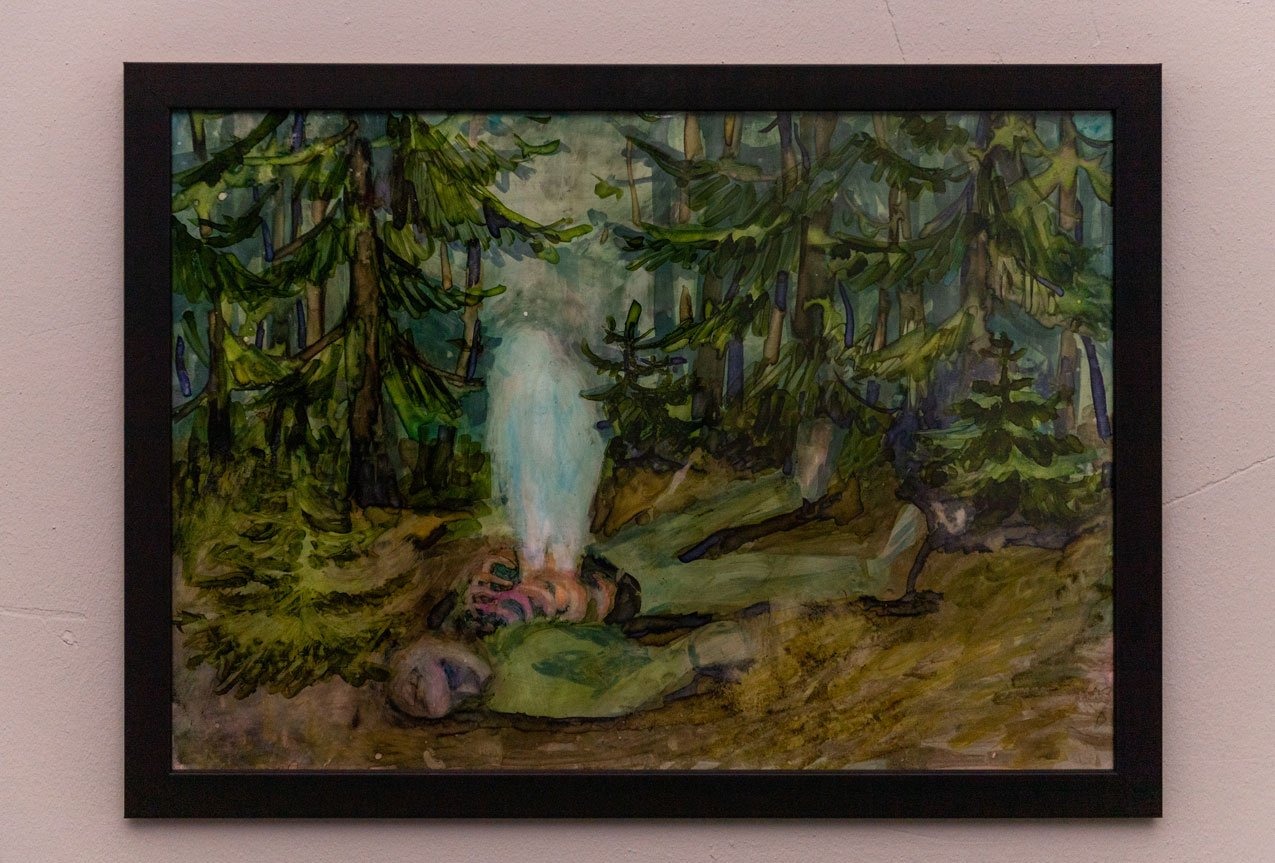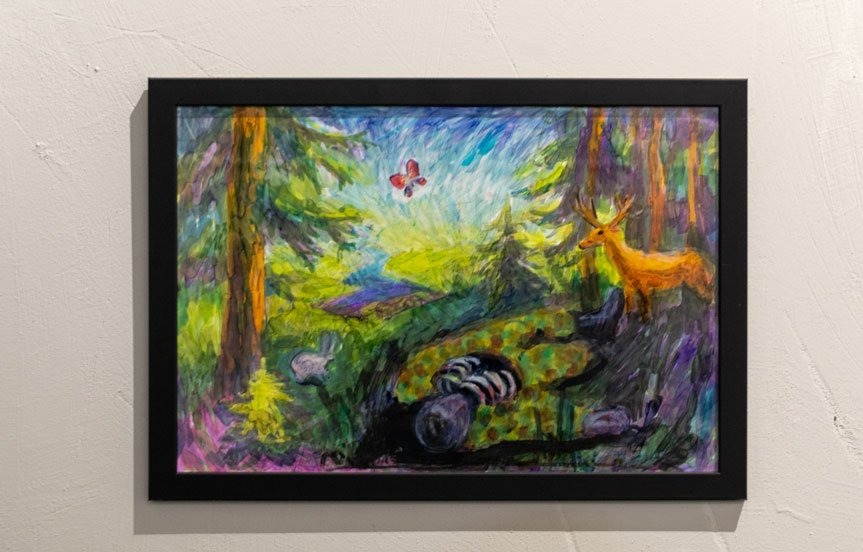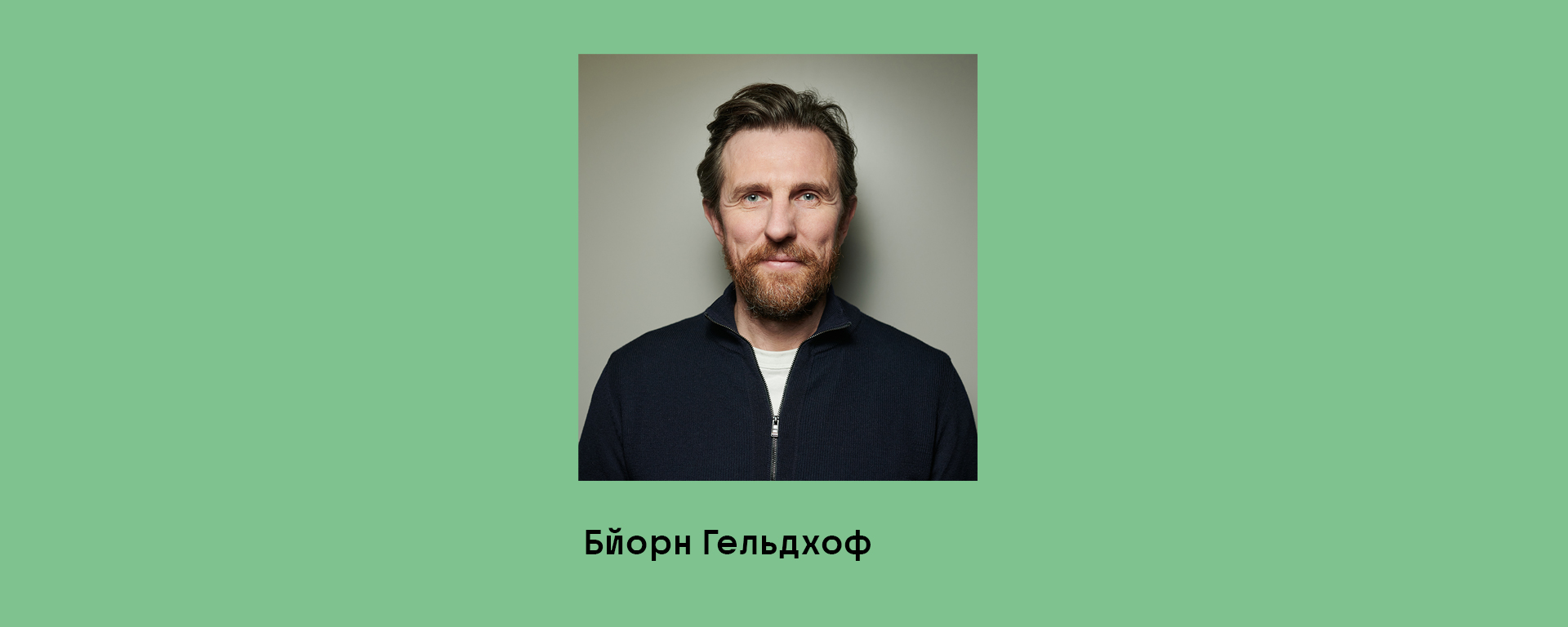"Ukrainian Paradise"
Виставка в межах програми PAC UA
Ukrainian Paradise* збирає та осмислює ідеалізовані в українському суспільстві образи, лозунги та символи. Вони доносяться до нас завдяки живій популярній культурі, що формується різними людьми та інституціями. Зокрема, «байрактарщина», що вважається поганим смаком серед одних, та була беззастережно підхоплена усіма іншими, потрапляє в наше поле зору. Цей зріз популярної культури, що наповнений проявами національної ідентичності у воєнні часи, — це невичерпне вмістилище інформації про суспільні настрої, уявлення та мрії. Відтак, ми не можемо й надалі її ігнорувати, необхідно підійти до неї впритул.
Український рай — це штаб, що відображає стан, в якому потреба слугувати вимогам війни структурує повсякденне життя та культуру. Відтак суто практичні речі та прагматичні ідеї стали сакральними в Українському раю, вони насичують стихійну популярну культуру та впливають на її героїв та символи.
Врешті Ukrainian Paradise вельми специфічний: це символічно і матеріально перевантажений простір, в якому зброя та мертві росіяни хаотично перетинаються з комічними зображеннями Пса Патрона, оптимістичними лозунгами на кшталт «Доброго вечора, ми з України!» та національною символікою у великих кількостях.
Тут немає нічого постійного, тож виставка запрошує відвідувачів подумки додати або забрати будь-що з цього простору, реагуючи на питання: «Хто і що опиняться в майбутньому Українському раю?».
Кожен — творець Українського раю.
*Український рай
У проєкті беруть участь художни_ці: Ксенія Гнилицька, Євген Коршунов, Андрій Рачинський, Максим Ходак, Аліна Якубенко та Kinder Album.
Кураторка: Оксана Чорноброва.
Із серії Новини з майбутнього, 2022-2024
цифровий друк на папері
Надано художницею
Створено за підтримки PinchukArtCentre
Робота Новини з майбутнього Ксенії Гнилицької — це сміливі та дотепні пророцтва про утопічне майбуття. Які з них втіляться в Українському раю?
На перший погляд, серія, яку Гнилицька розпочала на початку повномасштабного вторгнення, розповідає про ідеальне майбутнє, яке може бути прихистком від буремного сьогодення. Та під пильним поглядом стає зрозуміло, що прогнози художниці вказують на конфліктні точки у сучасному українському суспільстві — свобода ЛГБТ, доля церков Московського патріархату, визнання рівності багатьох націй на теренах України. Прикметним також є передбачення про зникнення усіх «людських агентів» з території Росії. Робота Гнилицької спонукає відповісти на питання актуальні зараз і цим самим винайти майбутнє. Чи справді від подальшої історії держави-окупанта залежить майбутній Український рай? Чи можлива у ньому рівність різних націй та соціальних груп?
Водночас, у Новинах з майбутнього технологічний футуристичний лад наповнений традиційними національними образами та символам, що провокує замислитись над їхньою актуальністю в завтрашньому дні. До прикладу, чи може бути монументом майбутнього велетенський голографічний пам’ятник козаку?
Коли зійде українське сонце?, 2022
трафарет з ПВХ, сонячна батарея, портативна зарядна станція EcoFlow
Надано художником
Особлива подяка EcoFlow Ukraine
Робота Євгена Коршунова відсилає до цитати Джохара Дудаєва, що був першим президентом Чеченської Республіки Ічкерія. «Росія зникне, коли зійде українське сонце», — виголосив Дудаєв у 1990-х роках, пророкуючи зіткнення Росії і України.
У 2022 році Коршунов перетворює це твердження на питання та розташовує його в сучасному контексті, де невизначеність щодо майбутнього Росії та України лише зростає, а відповідей на питання може бути безліч. Напис на роботі натякає, що сонячна батарея, яка живить акумулятор, чекає, коли зійде українське сонце і осяє майбутнє.
У контексті виставки робота пропонує замислитись над альтернативними перспективами розвитку подій та провокує питання: «Що буде, коли зійде українське сонце?».
instagram.com/andrey_rachinskiy, 2024
2 LED екрани
Надано художником
Створено за підтримки PinchukArtCentre
Робота Андрія Рачинського фіксує явище, що отримало назву «байрактарщина». Цей дещо зневажливий парасольковий термін позначає сукупність проявів національної ідентичності в контексті війни у популярній культурі. Серед них Рачинський виділяє найбільш ідеалізовані україн_ками образи, символи та слогани.
Важливо, що байрактарщина виконує низку життєво необхідних функцій. Завдяки своєму народному характеру байрактарщина не цензурується вищими інстанціям. Вона відображає справжні суспільні настрої, накопичує уявлення про правильне та неприйнятне, що врешті формує сучасну міфологію зі своїми героями та сюжетами. Водночас цей зріз популярної культури дозволяє у найшвидший та найпростіший спосіб реагувати на події, доносити важливі меседжі та позначати «свого і чужого», що особливо важливо в кризових умовах. А також може мати терапевтичний ефект, бо допомагає висловлювати почуття, говорити про мрії та страхи тощо.
Втім, саме через свою хаотичність, реакційність та спрощеність, байрактарщина не може і не має задовольняти усі запити на комунікацію та культуру. Надмірне використання байрактарних образів у державній комунікації, для комеморації та національної саморепрезентації викликає питання. Як і відтворення національної символіки в комерційних цілях, що де-юре має регулюватись відповідним законом про рекламу, та де-факто віддано напризволяще. Що це значить, коли Пес Патрон отримує державні нагороди? Чому монумент радянському солдату пофарбований у жовто-блакитний? Навіщо на МАФі з шаурмою український прапор? — Ці та інші питання навіює робота instagram.com/andrey_rachinskiy.
Емоджі голуба миру, 2024
дрон DJI Mavic 3, ламінована табличка, антиударний кейс, коробки
Надано художником
Створено за підтримки PinchukArtCentre
Після завершення виставки дрон буде передано Олександру Леню, в бойовий підрозділ у складі БШР НГУ «Рубіж»
У роботі Максима Ходака голуб миру, який є символом пацифізму та миру загалом, не може летіти сам, — його несе дрон. Так художник підкреслює, що в реальності збройного вторгнення мир досягається військовими засобами, а пацифізм — це привілей доступний тим, хто в безпеці. Окрім цього, Ходак, наголошує, що «інтернет-активізм», який полягає в надмірному використанні емоджі українського прапора та голубів миру, не несе ніякої користі, на відміну від надання справжньої військової допомоги. Так розрив між символами війни та її дійсністю, досягає піку абсурдності в цій роботі, — як і в оточуючій реальності. Її частиною дрон стане після виставки, адже полетить на фронт.
Водночас, на виставці Ukrainian Paradise робота Емоджі голуба миру привертає увагу до того, як зброя стає об’єктом поклоніння в Україні. Дрон, який слугує для стеження та ліквідації ворогів, схожий на механізованого янгола. Він загрозливо літає у просторі далекому від фронту, подібно до того, як засоби знищення розташовуються в музеях та кав’ярнях, а їх образи – у піснях та на муралах. Так, символ зброї в іншому історичному контексті може бути відірваний від своєї захисної мети, актуальної сьогодні. Врешті війна закінчиться, та чи залишиться дрон в Українському раю?
Навушник, який транслює єдиний марафон новин, 2023
кераміка, музична колонка
Надано художницею
У роботі Kinder Album безперервний потік новин матеріалізувався у величезному навушнику, страхітливому та смішному водночас. Ніби із дивного сну, він втім свідчить про дивну реальність воєнного часу, у якій новини проникли у особисте життя та тіло. Навушник щільно прилягає до вуха та транслює інформацію «прямо в голову». Водночас, як скульптура, він підкреслює, що шум новин весь час лунає на фоні.
Тривожність підсилюється тим, що звучить телерадіомарафон «Єдині новини». У зв’язку з указом президента про єдине мовлення в умовах воєнного стану, регулювання марафону здійснюється спільно з представниками влади. Відтак, постає питання щодо просування інтересів владних політичних сил, відсутності плюралізму думок та критики влади на найбільшому медіа країни. У контексті виставки, робота Kinder Album спонукає замислитись: чи будуть в Українському раю єдині новини? Що ж тоді значить слово «єдиний»?
Який дивовижний світ, 2023
акварель на папері
Надано художницею
Сонце світить, квіти квітнуть, а усміхнені дітлахи передають бомби військовому, — так зображує наш дивовижний світ Kinder Album. Робота нагадує малюнки в шкільному альбомі, де армія та військова техніка розмальовані в яскраві фарби. Так художниця виявляє симптом мобілізованого суспільства, в якому діти, відтворюючі суспільні ідеали, прагнуть долучитись до війни. Романтизоване сприйняття зброї та військової справи, до якого подекуди тяжіють діти, а інколи і дорослі, — це закономірна захисна реакція психіки. Втім, варто залишатись критичним, коли вона замінює усвідомлення нищівних реалій війни, в якій вбивство та смерть — це буденність.
Малюнок Kinder Album вступає в діалог з роботою Євгена Коршунова. Палюче світило на зображенні наштовхує на роздуми: невже це той день, коли зійшло українське сонце?
Із серії Аркадія, 2023-2024
акварельні олівці на папері
Колекція ГО “Український музей сучасного мистецтва” (UMCA)
Роботи Аліни Якубенко з серії Аркадія виглядають як ілюстрації до казки, втім головні герої — мертві. Придивляючись, ми бачимо, що зображені померлі – солдати. Форма та інші деталі підказують, що це росіяни. Роботи нагадують дитячі малюнки, на яких трупи окупантів сусідять з райдугами, квіточками та метеликами. Аркадія показує, як мертві росіяни поселились в українських мріях та зайняли помітне місце серед ідеалізованих (і тому часто відтворюваних) образів.
Важливо, що померлі окупанти зображені посеред густих лісів. Розкладаючись, вони зливаються з українським ландшафтом та змішуються з українською землею, отруюючи її собою. Втім йдеться не лише про екологічні та санітарні наслідки: померлі окупанти отруюють колективну уяву — смерть людини, росіянина, стала бажаною та романтизованою. На фізичну присутність отруйних тіл, як і на необхідність захищатись від ворога, вплинути важко. Однак, обміркувати, чи є місце для мертвих росіян в Українському Раю, можливо і необхідно.
